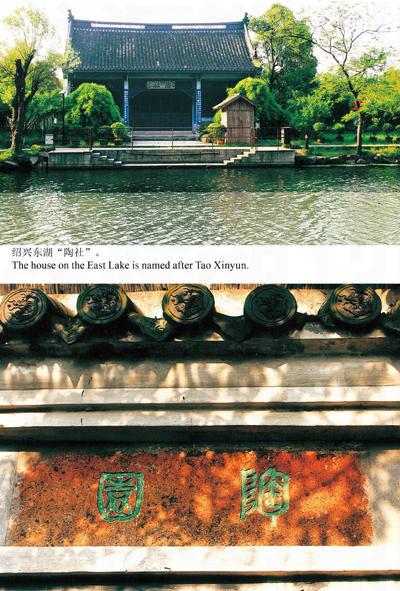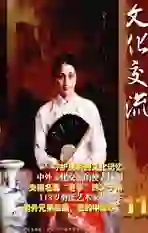Scholar and East Lake
2009-05-28ByChenRongli
By Chen Rongli


East Lake, situated at the foot of the Bird Chirp Hill in Shaoxing, is famed for its refined beauty as if it were a bonsai of miniaturized landscape. Compared with the West Lake in Hangzhou, it is small and yet it is aesthetically sophisticated.
The lake owes its sophistication to Tao Junxuan (1846-1912). Originally the site was a quarry. Workers cut into the ground and cliffs there. Over years, waters gathered there and it became a pond. It would have remained an ordinary pond if it had been noticed and improved by Tao. In 1886, Tao and his two brothers raised 8,000 silver dollars and started a big landscaping project on the deserted quarry. The three-year landscaping project turned the quarry into East Lake. It has been a big tourist attraction since then.
The lake is more than a tourist attraction. While the quarry was undergoing the landscaping project, Tao Junxuan had a modern school built nearby and called it East Lake Tongyi School where courses in history, Chinese classics, mathematics, astronomy, and translation were offered. The school did not focus on the knowledge of the past. It introduced new ideas and new knowledge. Zhou Zuoren, the younger brother of Lu Xun, taught English there for two months after he came back home from studies abroad.
Tao Junxuan retired to Shaoxing in 1904, five years after the completion of the landscaping project. He put more energy into the school there. It became one of the secret meeting places for underground revolutionaries in Shaoxing. Qiu Jin and Xu Xilin met there. After Qiu Jin was executed after an aborted uprising, Tao Junxuan submitted a long document to the throne, criticizing the Zhejiang governor for his willful death executions. The manuscript is now in the collection of Zhejiang Provincial Library. After Tao Chengzhang, who once taught at the Tongyi School, was assassinated in 1912, Tao Junxuan renamed the Glass Hall on the lake the Tao Society in memory of the former teacher.
In the late Qing Dynasty (1644-1911), Tao Junxuan enjoyed a national reputation as a preeminent calligrapher and poet. He started studying calligraphy in his childhood years. He focused on the calligraphies in Qin (221-207BC) and Han (202BC-220AD) dynasties and up to the Six Dynasties (265-588AD). He was a diligent learner. Whenever studying a rubbing from an ancient stone inscription by an ancient master, he wrote the inscription more than 1,000 times. All his lifetime he kept practicing calligraphy. It was said that before he started an evening practice session, he would shut himself up in the study so that nobody would see how he practiced.
Tao was accomplished in major calligraphic scripts and his Wei script was the best, showing majesty and beauty. His accomplishment in calligraphy was testified by the fact that “光绪通宝” on the silver dollar and copper coins minted and circulated in the years of Emperor Guangxu was handwritten by Tao Junxuan.
His calligraphy was admired and appreciated by many great scholars in his time. Tao Junxuan met with Weng Tongsu several times in Beijing. Weng was a prime minister of the Qing Dynasty and worked as a tutor to Emperor Guangxu. Weng himself was a calligrapher who emphasized the importance of copying ancient inscriptions. When Weng was to meet Xuan, he insisted on a special dressing code so that the two calligraphers could meet on the equal footing as calligraphers.
Appreciated by Zhang Zhidong, a key minister in the late Qing Dynasty, Tao worked at Guangya Academy and then Guangya Press for a long while, a publishing business owned by Zhang Zhidong. Tao wrote many couplets for office buildings in the press compound.
Most of the couplets and poems he composed and written are gone today, but tourists can still see some couplets in his handwriting around the East Lake where Tao lived in his last years.□
